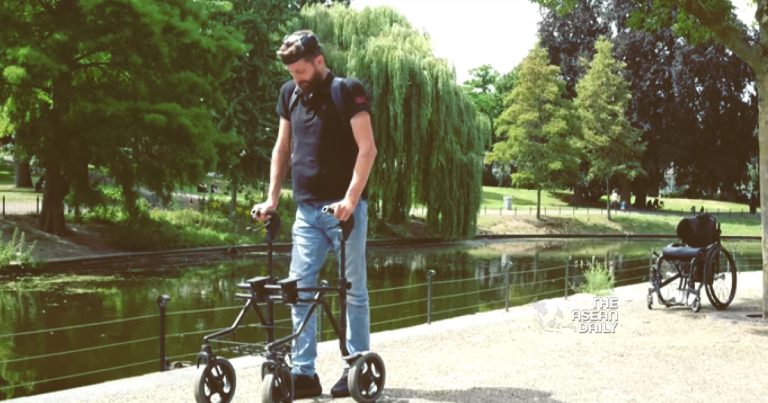25-5-2023 A 40-year-old man, Gert-Jan Oskam, who had been paralyzed in a cycling accident 12 years ago, can now walk again, thanks to groundbreaking implants in his brain and spinal cord. The brain-spine interface (BSI), which has remained stable for a year, enables Oskam to stand, walk, climb stairs, and navigate complex terrains, as detailed in a study published in the journal Nature.
Remarkably, Oskam even regains some control over his legs when the BSI is turned off. Expressing his belief in the possibility of walking again, Oskam stated during a news briefing, “My wish was to walk again, and I believed it was possible.”
After his accident in China, Oskam returned to the Netherlands hoping to find the necessary assistance. However, at that time, the technology was not advanced enough. Oskam had previously participated in a trial led by Grégoire Courtine, a neuroscientist at the Swiss Federal Institute of Technology, who also contributed to the recent research. In 2018, Courtine’s team discovered that technology could stimulate the lower spine and assist individuals with spinal cord injuries in walking again. While Oskam experienced improvements during the three-year trial period, his progress eventually reached a plateau.
For the latest study, the research team established communication between Oskam’s brain and spinal cord using a digital bridge. Oskam underwent 40 sessions of neurorehabilitation throughout the study. He can now walk a distance of at least 100 meters (328 feet) or more, depending on the day.
“We’ve captured the thoughts of Gert-Jan and translated these thoughts into a stimulation of the spinal cord to re-establish voluntary movement,” explained Courtine.
The researchers aim to miniaturize the hardware required for the brain-spine interface, as Oskam currently carries it in a backpack. They are also investigating the potential of similar devices to restore arm movement.
Recent years have seen significant advancements in the treatment of spinal cord injuries. In February, a study published in Nature demonstrated that targeted electrical pulses delivered to the spinal cord can improve arm and hand movement after a stroke. The researchers involved in Oskam’s case believe that their technology can eventually restore movement in arms and hands as well. They also envision its potential application in helping stroke patients with time and resources.




